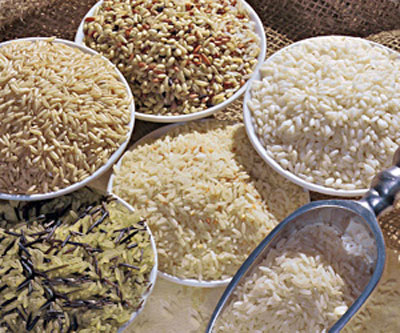|

by Jonathan Benson
staff writer
April 03, 2013
from
NaturalNews Website

Despite all the claims made by industry-funded hacks that
genetically-modified organisms (GMOs) and other industrial
agricultural methods are necessary for the future of humanity, it is
the traditional growing methods that continue to shine through as
the real sustainers of life.
As reported by Gaia Health, Indian rice
farmers using traditional, organic growing methods are achieving
yields far higher than farmers using more modern methods.
In the case of Sumant Kumar, rice yields have surpassed the
national average per hectare (about 2.5 acres) nearly ten-fold.
According to reports, Kumar is currently
yielding about 22.4 tons of rice per hectare, greatly surpassing
that of other rice farms currently outputting roughly 2.3 tons per
hectare.
His secret? A traditional crop
management protocol known as System of Rise Intensification,
or
SRI.
Farmers adhering to SRI techniques will typically plant about half
the number of seeds as farmers using more modern methods, and will
space them out at intervals of about 10 inches.
They also plant
their seeds much younger, and keep the soil dryer, while paying much
closer attention to weed growth.
By hand-removing weeds, SRI farmers are
able to allow more water and nutrients to feed their rice plants,
which results in significantly higher yields.
"Farmers use less seeds, less water
and less chemicals but they get more without having to invest
more," says Dr. Surendra Chaurassa, agriculture minister to the
region where Kumar's farm is located, as quoted by The Observer.
"This is revolutionary. I did not
believe it to start with, but now I think it can potentially
change the way everyone farms. I would want every state to
promote it. If we get 30 to 40 percent increase in yields, that
is more than enough to recommend it."
System of Root
Intensification methods could provide more than enough food to feed
humanity
According to Gaia Health, SRI methods originated in ancient
Madagascar, and were passed on from generation to generation among
villagers.
An agronomist by the name of Henri de
Laulanie observed the methods back in the 1980s, and brought
them back into use, teaching other farmers how to utilize them with
limited resources.
And perhaps the greatest aspect of SRI
is that it is not tied to the biotechnology industry or Big Ag.
"SRI offers millions of
disadvantaged households far better opportunities," Norman
Uphoff, Director of the International Institute for Food,
Agriculture and Development at Cornell University is quoted as
saying by The Observer.
"Nobody is benefiting from this
except the farmers; there are no patents, royalties or licensing
fees."
This is good news, as
Monsanto and
others in the agriculture-for-obscene-profits industry are
aggressively pursuing market expansions in developing countries like
India.
If the truth about the benefits of SRI
can be widely disseminated, poor farmers across the globe will be
well-equipped to reject the lies of Big Ag and the GMO industry.
"The farmers know SRI works, but
help is needed to train them," says Anil Verma, an agronomist
from the small Indian non-governmental organization (NGO) Pran,
or Preservation and Proliferation of Rural Resources and Nature,
which has been reintroducing SRI methods to villages all across
the third-world for the past three years.
"We know it works differently in
different soils but the principles are solid. The biggest
problem we have is that people want to do it but we do not have
enough trainers."
SRI methods can also be used to grow
other crops like wheat, sugar cane, and teff.
To learn more, visit:
http://sri.ciifad.cornell.edu/
Sources
|

